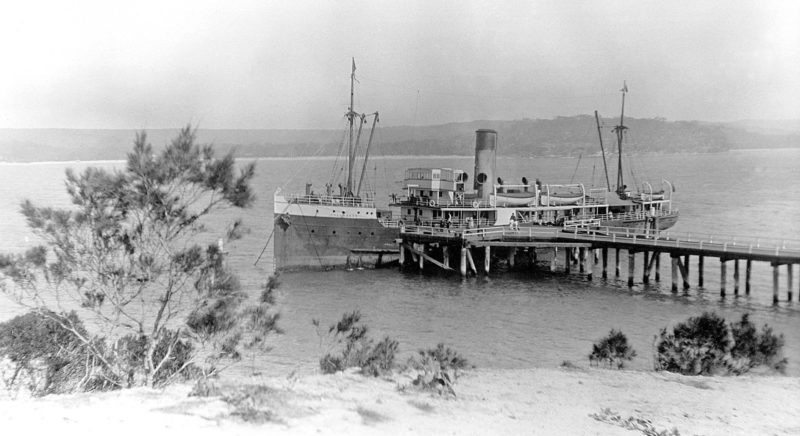
On 31th October 1950 this item was published in the Brisbane newspaper Courier Mail:-
TROUBLE SHIP DROPS ANCHOR
The trouble-ship Tamara, with a cargo of Chinese deportees from Australia, seven dogs, four cats, two monkeys and a gorilla, has dropped anchor at Hong Kong. The ship, on the Honduran register, has suffered an incredible series of adventures in the ten months it has taken her to sail from Newcastle, NSW to China. The normal time is three weeks. Now she is in Hong Kong, where everybody including officers, crew, dogs, cats, monkeys and the gorilla want to leave the ship. But there is still trouble. The port authorities insist that everyone but the captain must remain onboard.
The ship involved in this bizarre voyage was originally named Pulganbar, and for thirty years was one of the numerous small passenger/cargo ships operating along the coast of New South Wales. Pulganbar was built in Scotland in 1912 by the Greenock and Grangemouth Dockyard Co. for the North Coast Steam Navigation Company, which owned a large fleet running from Sydney to numerous ports in northern New South Wales, including Port Macquarie, Coffs Harbour and Byron Bay. Pulganbar was designed specifically for the service from Sydney to Grafton on the Clarence River, 40 miles upstream from the mouth, but the vessel had to be strong enough to withstand the worst the sea could throw at it on the often rough voyage along the coast.
Pulganbar was 1,159 gross tons, 225 feet overall length, with a 33 foot beam, and on completion in March 1912 made the long delivery voyage to Australia, which took just over six weeks. Pulganbar entered Sydney Harbour for the first time on 15th May, and next day this description of the voyage appeared in the Sydney Morning Herald:-
The vessel left Grangemouth on 30th March and met squally weather right away. The ship’s log shows that a strong ESE blow prevailed for days and that the steamer was pitching badly all the time Her steaming time to Port Said the first port of call was 13 days 13 hours 10 minutes or an average of 11 knots Then she made for Suez and covered 80 miles in seven hours under full speed The next port was Colombo and before reaching there a hard gale from the SSE set the steamer plunging badly and kept the engines racing but she averaged 12.47 knots over this portion of her journey. Between Colombo and Sydney a lot of bad weather was met especially one heavy gale from the WSW which kept things merry aboard. On 10th May a strong westerly gale was encountered with a high following sea and the weather was generally squally. The blow continued hard for days with a big sea but the Pulganbar behaved splendidly. Her steaming time over this long run was cut out in the creditable time of l8 days 3 hours 39 minutes or an average of 11.9 knots. Altogether the Pulganbar steamed 12,231 miles in 43 days 7 hours 53 minutes which shows an average of 11.76 knots. The vessels speed on steam trials was over 16 knots.
Once safely in Sydney Pulganbar underwent final preparations for its entry into service. There was great interest in the vessel in Grafton, and this description appeared in the local newspaper, the Clarence and Richmond Examiner, on Tuesday 21st May:-
There is accommodation for 100 saloon passengers on the main deck and in 10 deck staterooms amidship, the second class rooms being forward, with accommodation for 24 people. The dining room is amidship, an apartment finished in polished hardwood, artistically arranged. There is a bridge, sun deck, amidship, on which the life-boats are housed, and the master and officers are accommodated in comfortable quarters alongside their work. There are conveniences for carrying live stock and fish in the forward ‘tween decks where the ship’s sides are open for purposes of ventilation. There are two holds and two large hatches served by four winches for the expeditious working of cargo. There is a room fitted for the cold storage of butter, of which some 2000 boxes can be carried. The refrigerating machine is a 6 ton ‘Hercules’. The steam steering engine is of the latest type of Reid’s noiseless gear, as made for steam yachts. The machinery consists of a triple expansion engine with four cylinders, and four cranks balanced to eliminate vibration. The cylinders are 21, 34 and a half, 40 and 40 inches in diameter respectively, and the pistons all have a stroke of 33 inches. There are two boilers of the ordinary marine type, working pressure being 200lbs. The speed of the vessel is something over fifteen knots, and her carrying capacity is about 600 tons on a draft of about 11 and a half feet of water. The Pulganbar will leave Sydney at 7pm on Saturday and is timed to cross the Clarence bar on Sunday afternoon and to arrive at Grafton about noon on Monday.
As planned, Pulganbar left Sydney on time on 25th May on its first trip to Grafton, and crossed the notorious bar at the entrance to the Clarence River for the first time the next afternoon, staying over night at Maclean, and following morning continuing up the river to Grafton, where a large crowd gathered at the wharf to witness the arrival. Next day the local newspaper reported:-
The Pulganbar was piloted up the river by Captain Anderson, local branch manager, and snugly berthed at the Company’s’ new wharf shortly after noon yesterday. With her beautiful exterior lines and attractive, slate-coloured coat on, the vessel has a picturesque look. She is flat-bottomed, built expressly for the river trade, with a light draught. Her deck equipment comprises two winches, and two derricks at each mast. To be concise, the vessel is the acme of perfection in modern coastal ship-building. In this respect the style of build was well studied out, and the builders, the Greenock and Grangemouth Dockyard Co. Ltd., have left no room for complaint in regard to workmanship. Although the vessel is flat-bottomed, she has very fine ends, which is conducive to speed. Captain Hird speaks well of her sea-going qualities, which he describes as “wonderful for a boat of her class, and in a beam sea, swings easily”. The Pulganbar has three decks, one including a boat deck for passengers. There are two-holds of almost equal capacity. She can carry 128 passengers fore and aft, and from all accounts will prove a splendid acquisition to the already large fleet of vessels owned by the Company.
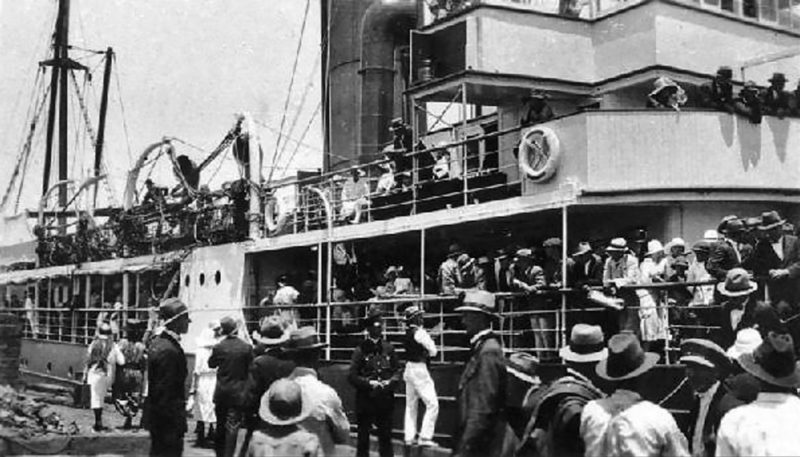
On its first voyage south Pulganbar set a new record, covering the distance from Grafton to Sydney in 19 hours 40 minutes. The usual itinerary also included a stop at Newcastle on the northbound trip, this being done primarily to take on coal bunkers. Pulganbar operated along the coast for the next thirty years, and overall became a popular ship but was nicknamed the ‘Plunginbar’ by some passengers due to its poor seakeeping qualities in bad weather.
The crew of these coastal ships were a cosmopolitan lot with varied backgrounds. Years later a former fireman in the Pulganbar recalled the time a new cook joined the ship in Newcastle in 1913. The fireman was one of the first on board to meet the cook and commented on his fresh complexion. “I get my complexion from eating arsenic”, said the cook, who produced what appeared to be a cube of white chalk. “This is arsenic”, he said, and bit a piece off. “As a matter of fact, you’ll all benefit”, said the cook. “You had some in your soup today.” When the ship reached Grafton, the crew told the master that if the cook did not go, they would. The cook left.
On 3rd December 1942, Pulganbar was requisitioned by the Royal Australian Navy as a Stores Ship, being used in New Guinea and the islands. On at least one occasion Pulganbar transported troops, it being recorded that on 3rd January 1943 elements of the 2/6th Australian Battalion embarked on Pulganbar at Milne Bay and were taken to Port Moresby, arriving there next day. In June 1943 the vessel was purchased outright by the Australian Government.
When the war ended, Pulganbar was laid up at Stockton in Newcastle Harbour, with another former North Coast SN vessel, Coolabar, tied up alongside it. In June 1946 both these vessels were sold to a local shipbroker, Mr A. J. Ellerker, and in 1947 they were purchased by a Chinese man, Fu Chan, of Canton, who also bought two more former North Coast SN ships, Orara and Gunbar. All these ships were to be given new names, Pulganbar becoming Yangtze River, but this was never painted on the ship, which remained idle at Stockton still in its wartime colours with Coolabar, which was to be renamed East River, alongside.
On 11th May 1948 both these ships were arrested by the Marshall-in-Admiralty for unpaid docking fees. This matter appeared to have been sorted out after several months, as in November 1948 Pulganbar was put into the drydock at Newcastle for repairs to the engines and propellers and general maintenance. Plans had been made for the vessel to leave for China as a crew was signed on and 500 tons of coal went into the bunkers, but then the departure was cancelled and the crew signed off.
Pulganbar was sold again, the buyers being a British businessman based in Hong Kong, Colin Burns, and a Canadian, Captain A. Miller, an experienced China coast sailor who had been imprisoned in Hong Kong by the Japanese during the war. The vessel was renamed Tamara and registration transferred to Honduras. Mr. Burns arrived in Newcastle in December 1948, and lived on board the ship while work proceeded refitting the interior and painting the exterior. It was reported that Burns and Miller planned to take the ship to China and sell it there, but in September 1949 an arrangement was completed for Tamara to be sold to the Kwong Sing Shipping Company of Hong Kong, where the ship was to be delivered to them.
While the final touches were being made to the ship a tragedy occurred when Benjamin Gluyas was electrocuted on 11th December 1949. Gluyas was adjusting brushes in a dynamo in the engine room when he put his head under the dynamo shield and accidentally came in contact with the brushes. Gluyas was found by crew members lying with his head in the dynamo.
Looking quite smart with a black hull, white superstructure and yellow funnel, Tamara carried out sea trials off Newcastle on 13th December 1949 then was prepared for the delivery voyage to Hong Kong. A crew of 25 was signed on, a very cosmopolitan lot from 16 different countries, including seven men who had jumped ship in Fremantle and were being deported from Australia to China. On 30th December 1949, Tamara departed Newcastle, under the command of Captain Miller, and the next day, the Newcastle Herald carried the following report:-
Tamara Sails And Takes Secret With Her
One of Newcastle’s major port problems, the Tamara, steamed past Nobbys just after noon yesterday. She had lain at her berth at Stockton since the end of the war. The Tamara was once the proud coastal steamer, Pulganbar, built in 1912. The Navy used her during the war.
A Chinese company bought her and named her the Yangtse River. Later, her present owner, Mr. C. Burns, flew from China and renamed her Tamara. Port authorities arrested the ship once. Later an attempt was made to get her ready for sea, and 500 tons of coal was loaded. The war in China delayed the departure. The air of mystery which surrounded the ship during the past few months hung about her as she left. She flew the Honduras flag, but her destination is uncertain. She cleared for Hong Kong, via Lyttleton, but the 75 year old French Canadian captain was not sure of her destination.
Although the destination declared on the departure papers was Hong Kong via Lyttelton, in the South Island of New Zealand, this may well have been done to confuse creditors. As soon as Tamara left Newcastle it turned north, and began steaming up the coast in waters the old ship once knew so well, and soon it was discovered there were three stowaways on board.
It did not take long for things to go wrong. The men signed on as deck crew refused to do their duty, and their work was done by the officers, the bosun and the three stowaways. The engineers were dealing with worn out coal-fired engines, which soon began giving trouble, and the ship had to anchor off Tacking Point, near Port Macquarie, and again in Trial Bay. On 3rd January 1950, Tamara put into Coffs Harbour with leaking boiler tubes and a faulty bilge pump, having taken five days for a trip that should have been completed in about twelve hours.
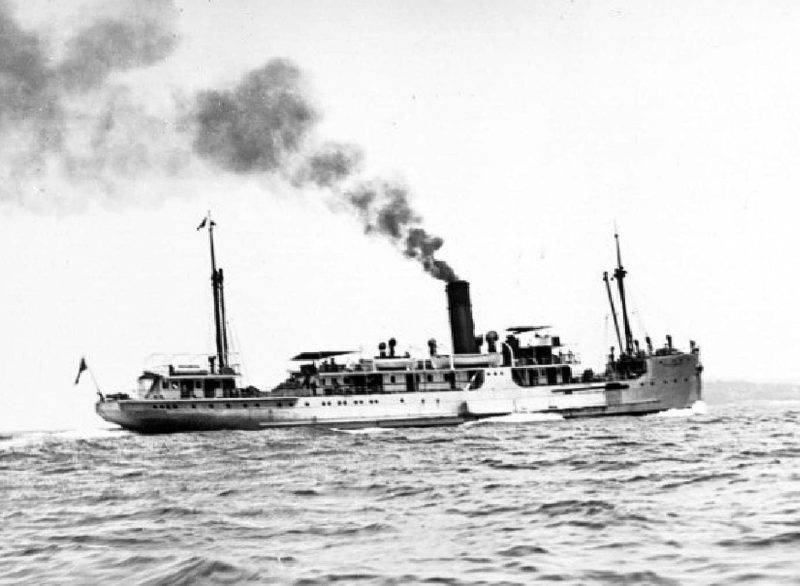
Shortly after the ship arrived in Coffs Harbour, one of the deportees jumped overboard, swam to the nearby beach and disappeared. The three stowaways were put ashore, one being arrested by military police as he was AWOL from the RAAF base at Williamstown, outside Newcastle. Another stowaway was a sixteen year old from Stockton, whose mother arrived and demanded she be allowed to take him home. Three members of the crew were signed off, and new crew were signed on, including several members of a local football team. The visit by Tamara to Coffs Harbour caused considerable local interest, and a report that appeared in several national newspapers included the following:-

Three stowaways were aboard. The master denied that six deportees had jumped her at points along the coast. One of the deportees is a stateless person.
An angry mother, from Stockton, Newcastle, visited a mother’s wrath on the captain. In the Harbour Master’s office she threw her hat on the floor and demanded in strong terms that her son, one of the stowaways, should be handed over. She was convincing.
Without the three stowaways, according to the spokesman for the crew of 25, it would have been difficult to sail the ship.
During the five days the Tamara took to reach Coffs Harbour, she was anchored off Tacking Point, and again at Trial Bay. There had been insubordination among the crew according to officers.
Three non-British members of the crew were paid off on 10th January. A Spaniard had deserted.
Seven Coffs Harbour men, including noted footballers, were signed on as replacements.

As if asking for more trouble, Tamara departed Coffs Harbour on Friday the 13th, but an hour later a boiler tube blew and the ship drifted off Solitary Island for several hours until repairs were completed. Once again the bow was pointed north, and the ship passed the entrance to the Clarence River and Byron Bay, but just as it entered Queensland waters the engines had to be stopped again. This time Tamara drifted for twenty hours off Surfers Paradise, and at one time was in peril of going ashore at the aptly named Danger Point.
Once the engines had been restarted the ship headed towards Brisbane, but in Moreton Bay another burst boiler tube brought them to a stop, and the ship came close to drifting onto Stradbroke Island. After repairs, Tamara was able to limp across Moreton Bay towards the mouth of the Brisbane River, but when the pilot was trying to board the ship he fell into the water.
Eventually, on 19th January, having taken six days to make a trip that should have been completed in less than one day, Tamara steamed up the Brisbane River and berthed at Peter’s Slip at Kangaroo Point for repairs. One of the engineers was quoted as saying that the trouble might be remedied by the expenditure of £5,000 at Brisbane.
If the crew had been hoping that their stay in Brisbane would be short and pleasant they were horribly wrong, especially when two of the deportees fell for the same woman, as the following story that appeared in the Brisbane Courier Mail on 21st January indicates:-
SHIP SEARCHED FOR WOMAN
Seaman stabbed in city
A Latin American seaman was stabbed with a sheaf knife on Evans Deakin Wharf at 7 o’clock last night. Police allege that two of six deportees were involved in a fight alongside the 1,100 ton SS Tamara, berthed at the Kangaroo Point wharf. The injured man is Carlos Bulnes, 31. He was stabbed just above the heart. Bulnes was admitted to the General Hospital, but his condition is not serious. Three squads of detectives, uniformed police, and water police, rushed to the wharf. They searched the ship from end to end to locate a woman for questioning.
DEPORTEES GOING TO INDO-CHINA
The Tamara, bound for China, put into Brisbane on Thursday with a burst boiler. She is taking the six deportees, under orders from the Immigration Department, to Indo China. They have all served prison sentences for deserting foreign ships in Fremantle. The woman was found hiding in one of the crew’s cabins. She was escorted from the ship. She told police she had been pushed into the cabin and the door was locked behind her. Crew members told police the woman came aboard the ship yesterday morning. The Tamara left Coff’s Harbour on 13th January after refitting. She was bought by two English businessmen in China for trading on the Chinese coast. A Central American Honduras seaman was charged last night with unlawfully wounding. Detectives also charged a young woman late last night with vagrancy.
Tamara remained in Brisbane for seven weeks, during which there were several court hearings involving crew members, some of whom ended up in jail, and a man working on the ship was electrocuted. It must have been a great relief to all concerned when, on 5th March, Tamara steamed down the Brisbane River and resumed its voyage north. More problems arose, and it took the ship five days to get as far as Bowen, normally an overnight trip, berthing there on 10th March to replenish the coal bunkers.
Next day, four crew members were arrested on a charge of stealing a barrel of beer from a Bowen hotel, and another crewman was arrested for drunkenness. On 12th March, fourteen of the crew walked off the ship, claiming that they had been terrorised by some of the others. However, worse was to come as on 20th March a fight with razors on board brought police racing to the ship and the boatswain received hospital treatment for razor slashes on the arms and legs, while a fireman was treated for head injuries.
By the time Tamara departed Bowen after a stay lasting three weeks, the complement on board had been increased by the acquisition of seven dogs and four cats. By now the ship had been ordered to go to Borneo, which meant going through Torres Strait, and its next port of call was to be Ambon for more coal.
As Tamara neared Thursday Island a generator shaft broke and the vessel had to anchor in Portland Roads while temporary repairs were made. Tamara then limped to Thursday Island to complete the repairs, which it was thought would only take a few days. Instead, Tamara would remain there four months, during which time the coal supply on board was exhausted, the crew were not paid, and a writ was issued against the ship. The next report appeared in the Brisbane Courier Mail on Friday 11th August:-
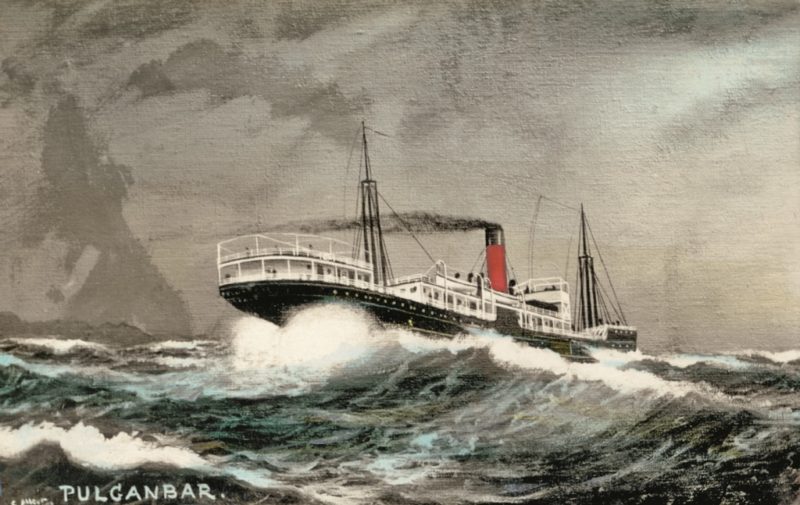
OFF TO CHINA
The slow boat sails from Thursday Island, Thursday.
‘The Slow Boat to China’ is on the move again.
The Tamara, which has attracted this title by her laborious journey to China, sailed today, after the bailiff removed a writ from her mast and a Customs clearance was finalised. The crew were in high spirits, and Captain A. Miller said he had enjoyed the ship’s four month stay here.
Tamara crawled slowly towards Ambon, but in the Arafura Sea boiler tubes began to blow out repeatedly, and the ship would drift for up to 18 hours at a time. With supplies of both food and coal running dangerously low, Captain Miller decided to obtain both at Makassar, unaware that it was at the centre of a vicious civil war being fought out between Government troops and a local rebel group.
When Tamara dropped anchor in the harbour the port was totally deserted, and it was some time before a man in a canoe came alongside, and agreed to take one of the ship’s officers ashore. On returning he reported that there was considerable gunfire ashore and the people were more worried about staying alive than supplying the ship with food and coal.
Captain Miller decided to proceed up the coast of Sulawesi, and reached a place called Pare Pare, which was not affected by the civil strife but did not have any supplies of coal available. However, the crew was able to load eighty tons of firewood over two days, which would have to suffice. Captain Miller also took the opportunity to enlarge the crew by signing on four Indonesian men.
Leaving Pare Pare, Tamara made its slow way across the Makassar Strait to the scheduled bunker port of Samarinda in East Kalimantan. Unfortunately, the ship grounded on the bar at the entrance to the Mahakam River, and once refloated only had enough firewood left to proceed half way up the river to the port. While replenishing the bunkers with coal, an orang-outang and two monkeys were added to the menagerie on board.
Tamara departed Samarinda on 14th September, and it was hoped it could go directly to Hong Kong, but the old ship made such slow progress that it again ran low in food and water and on 23rd September staggered into Manila. A week later, having replenished bunkers and food supplies, Tamara departed on the final leg of the voyage to Hong Kong. About 200 miles out, when off the northeast tip of Luzon, Tamara ran into a typhoon and for two and a half days battled to avoid being driven ashore on the Hermanos Islands. With very poor stability, the ship did not ride the seas well, swinging wildly from beam to beam, and could very easily have capsized. The inexperienced firemen could not cope with the conditions in the stokehold and at one point refused to work, causing steam to be lost. With heavy damage caused to the ship, including lifeboats and railings, the captain had to put back to Manila, which Tamara reached again on 8th October. On arrival the nine firemen who had refused to work were arrested on charges of mutiny and placed in custody by immigration authorities on Engineer Island.
After repairs and signing on six new firemen, with the nine arrested firemen back on board but travelling as passengers, Tamara left Manila on 23rd October, and finally arrived at Hong Kong on 30th October 1950, anchoring off Stonecutters Island. The captain ordered the Police flag be raised immediately, but this may have just been a precaution because of the presence of the deportees and the mutinous crew members on board, but on this occasion there was no report of trouble. However, the Hong Kong port authorities ordered that everyone except the captain had to remain on board until all of them were cleared by immigration.

Whether the arrangement for the ship to be purchased by the Kwong Sing Shipping Company had fallen through is not certain, but shortly after arriving it was listed as having been renamed Lily and owned by Lily Lee of Shanghai, though remaining under the Honduras flag. After all the trouble getting the ship to Hong Kong, the new owner seems to have got very little use out of it, as Lily was reported to have been detained by Chinese Nationalists on 16th June 1951 at Kaohsiung and scrapped there in 1952.



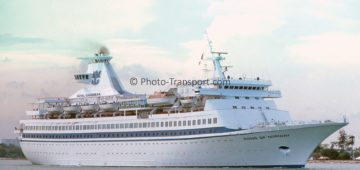



Comments
Sorry, comments are closed for this item